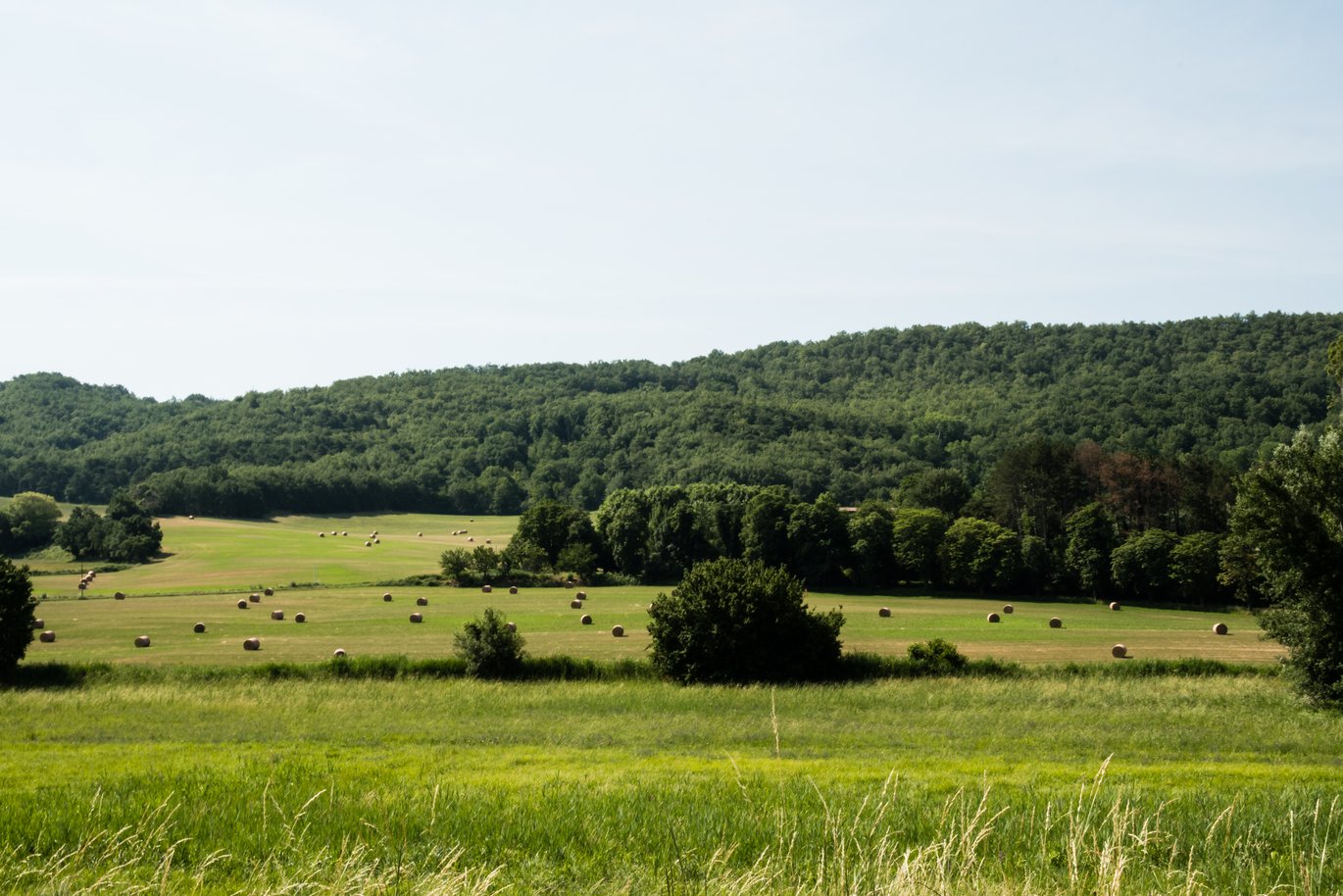High-resolution field- and farm-scale data is needed for future implementation of e.g. afforestation as agri-environmental measure
According to researchers from the Department of Agroecology at Aarhus University and researchers from Scotland's Rural College (SRUC) implementation efficiency of some agri-environmental policy interventions, as the case here with afforestation shows, depends on the availability of high-resolution agricultural and landscape data.

Agriculture is a major contributor to the nitrate pollution of groundwater and surface waters. The nitrate leached from the root zone of farmed fields reaches the surrounding water bodies (N load) and causes the excessive growth of algae. This threatens biodiversity as well as our drinking water supplies. Measures have been taken by the European Union and the Danish government to reduce the N load from agricultural fields.
Researchers from the Department of Agroecology at Aarhus University and researchers from Scotland’s Rural College have in a new study used afforestation as a case study to illustrate how high-spatial resolution data can be used to improve the efficiency of implementation of not only nitrate-related measures but also measures to reduce greenhouse gas (GHG) emissions. Afforestation of agricultural land has the potential to reduce both nitrate load and GHG emissions, and targeting one will also affect the other.
”We developed a method to use nationally available high-resolution data from the island of Mors in Denmark to minimise the area of agricultural land selected for potential afforestation for a given reduction of N load or GHG emissions. We chose an island because it has clearly defined boundaries, and Mors because it is of sufficient size and is largely agricultural,” says PhD Student Noha Mahmoud from the Department of Agroecology.
Two scenarios
The aim of the study was to investigate how high-resolution data can be used to improve the efficiency of implementing environmental measures to reduce N load and GHG emissions in order to comply with defined policy objectives. By using different models, the researchers were able to calculate the N load from the fieldscape.
“We developed two scenarios, where we could calculate the amount of reduced N Load and greenhouse gas emission. This allowed us to look at what would happen if we targeted afforestation in different ways,” says Noha Mahmoud.
The two scenarios chosen by the researchers were:
- Limitations on the maximum proportion of each farm that could be afforested
- Economic threshold proportions of the farm area, above which the whole farm had to be afforested
“The first scenario was chosen from the idea, that we did not want to see any reduction in the number of farms. In other words, we would only end up with a maximum proportion of each farm being afforested, for example a maximum of 10 %. The second one showed us, that if you want to achieve a certain reduction on one farm it may not be suitable or economically viable for agriculture any longer, and we might as well afforest the entire farm,” says Noha Mahmoud.
The selected scenarios represent one that considers the farmers and one that considers the overall socio-economy.
Field- and farm-scale characteristics
“We used targeted implementation, where we targeted locations with high nitrogen loading or greenhouse gas emissions, so we could maximise the efficiency of the afforestation. We knew that the relationship between the greenhouse gas emissions and N loading are connected, but we found that whereas N load depend on the location, cropping, and soil type, GHG emissions were mainly related to farm type,” says Noha Mahmoud.
When selecting fields for targeted afforestation the researchers focused nitrate leaching from the rootzone as well as on the efficiency of denitrification, that is the microbial process, where nitrate is reduced to gaseous losses such as nitrous oxide (N2O). However, nitrate leaching is the only location-dependent greenhouse gas emission source and it is only a minor contributor to the total GHG emissions, the selection of land for afforestation to reduce GHG emission depended more on farm-scale than field-scale characteristics.
Targeted vs. non targeted approach
“In order to reach a key reduction in N load we needed to know the geographical factors of the case area, and that required high-resolution data. We needed maps and detailed calculations in order to conduct this study,” says Noha Mahmoud.
To use a targeted approach instead of a non-targeted approach, high-resolution field-scale data are required to describe the location and area, the crop growth, the soil type, the manure and fertiliser applied, and the proportion of the leached nitrate that will reach the aquatic ecosystems.
“With the targeted approach we saw that in order to reduce N load or greenhouse gas emissions by 25 % of the maximum potential, we had to afforest 14 % and 18 %, respectively of the case study area. Compared to a non-targeted approach that is 42 % and 24 % less land,” says Noha Mahmoud.
In other words, a targeted afforestation approach to reduce N load and GHG emissions will reduce the amount a land needed, but according to the researchers the implementation of spatially-sensitive environmental interventions such as afforestation depends on whether or not high-resolution agricultural and landscape data are available. Without the right data the targeting will not be as successful.
| Behind the research |
|---|
| Collaborators: Department of Agroecology at Aarhus University and Scotland’s Rural College |
| Funding: This study is a part of the PhD project of Noha Mahmoud and was funded by the Scotland’s Rural College (SRUC), United Kingdom. The work was also supported by the ProvenanceDK project, which is financed by a grant from the Danish Innovation Foundation, and the Department of Agroecology, Aarhus University |
| Conflict of interest: None |
| Read more: The paper “The advantages of using field- and farm-scale data to target agri-environmental measure – an example of afforestation” is written by Noha Mahmoud and Nicholas J. Hutchings |
| For more information contact: PhD Student Noha Mahmoud, Department of Agroecology, Aarhus University. Mail: noha.mahmoud@agro.au.dk |
